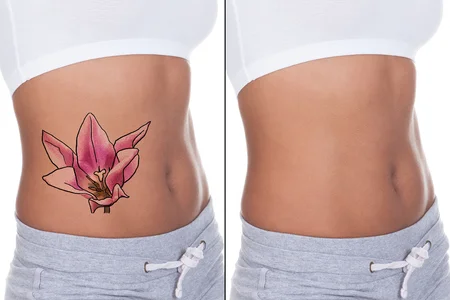Often patients have concerns about blisters and swelling following their laser tattoo removal treatment. The most common cause of these symptoms is not following the aftercare instructions. Especially, the instructions that require patients to ice the area, keep it elevated (above the level of the heart) and limit physical activity until the area is fully healed.
Not everyone has the same definition of “physical activity”. Everyone understands that they should not exercise. Still, many people do not know that cooking, gardening, grocery shopping, and even driving are all physical activities. This all can lead to blisters and swelling.
While not following aftercare instructions is usually the cause of blisters and swelling, it can also occur with the treatment of dense tattoos, “cover up” tattoos, and colored tattoos. Every so often, blistering or swelling can occur for no reason at all.
The good news is that while blisters and swelling may be off-putting, they usually resolve without incidence as long as proper care is followed.
Successful treatment of blisters and swelling is very simple:
- RELAX, REST & ELEVATE: If the blisters are small, observe them. They will heal on their own. This may take a week or longer. This is also true of swelling. Avoid physical activity! Elevation is very important!
- AVOID: Avoid doing anything that may cause the blisters to pop and peel off. Such as, wearing clothes that rub against the area. Preferably, you want the blisters to go away on their own. Your body will naturally reabsorb the fluid.
- USE: Use a non-stick bandage or gauze to protect the blister. Apply Vaseline or Aquaphor several times a day to help protect the area.
- OVER-THE-COUNTER PRODUCTS: Do not apply Neosporin, Bacitracin, Polysporin, Aloe Vera, Calomine lotion or any other over-the-counter anti-bacterial ointments, lotions, gels or creams as they can cause an allergic reaction and irritate the skin.
- CLEANING: Do not clean the area with hydrogen peroxide.
- IF THE BLISTERS POP: If the blisters pop, do not let the skin come completely off. Use a non-stick bandage to protect the blister. Also, apply a thick coat of Vaseline or Aquaphor until the area is healed.







